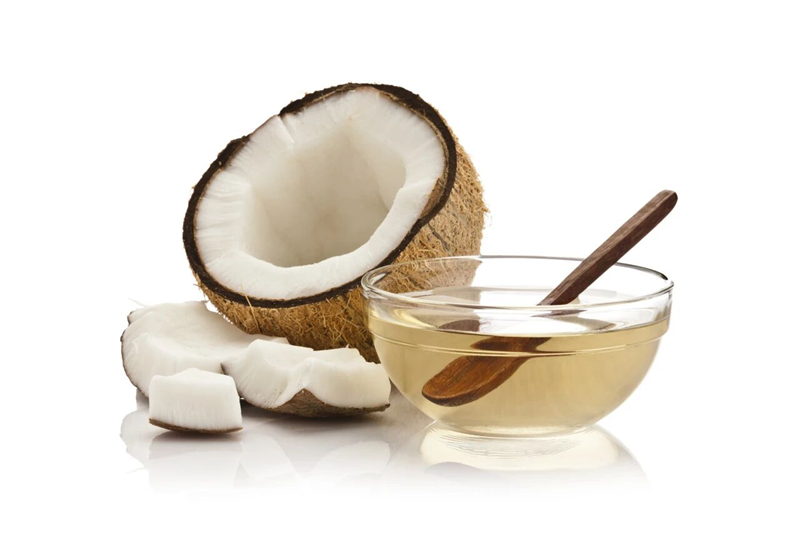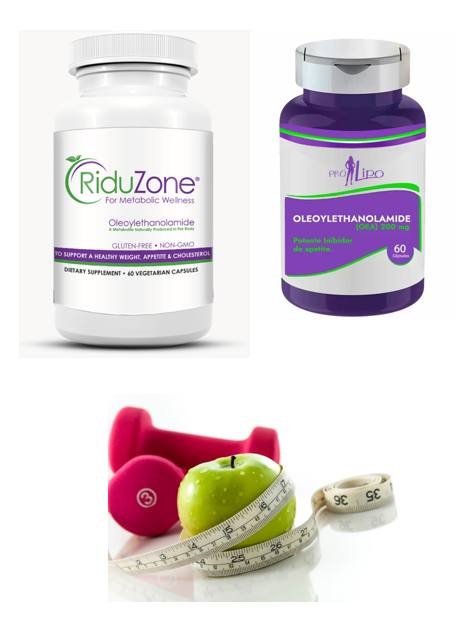
"Control your mouth" weight loss tool OEA
What is OEA?
Fatty acid ethanolamides belong to a class of lipids that exist naturally in plant and animal tissues and have a variety of biological activities: anti-inflammatory activity, immune response, stimulation of lipolysis and fatty acid oxidation, food intake control, and energy balance. In addition to the arachidonic acid ethanolamide we introduced above, the oleic acid ethanolamide (OEA) we will introduce next is also included.
OEA is a secondary amide compound composed of lipophilic oleic acid and hydrophilic ethanolamine, so it has amphiphilicity.
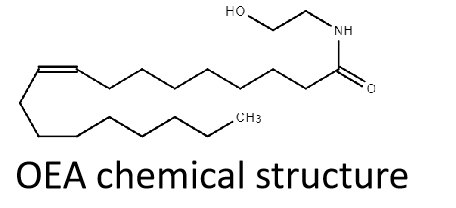
OEA is widely distributed in various organs and is found in the gastrointestinal tract (such as the small intestine, stomach, and colon), brain, fat cells, liver, kidney, lung, spleen, pancreas, salivary glands, muscles, and heart.
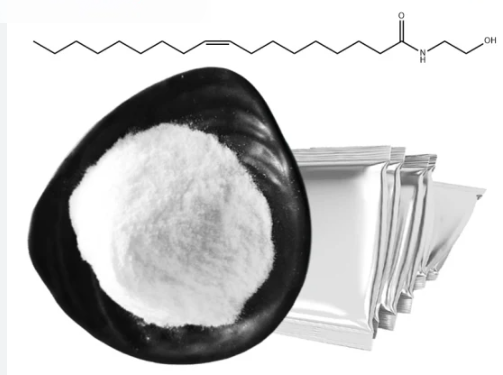
Physiological functions of OEA
OEA is considered to be a satiety factor that excites the vagus nerve sensory nerves and has the characteristics of reducing fat and controlling weight. This characteristic is mainly related to its activation of peroxisome proliferator-activated receptor α (PPAR-α) to promote fat catabolism and control food intake.

OEA stimulates the vagus nerve to generate satiety signals
Fat catabolism: OEA inhibits lipogenesis in adipose tissue by activating PPAR-α receptors and activates lipid β oxidation in muscles to decompose fat
-
Control of food intake: Studies have found that the administration of OEA to rats or mice will produce dose- and time-dependent inhibition of food intake. The mechanism is that OEA accumulated in the small intestine after eating activates intestinal PPAR-α receptors, which are related to vagus nerve sensory fibers. In turn, it leads to the recruitment of the solitary tract nucleus (NST) of the brainstem and the paraventricular nucleus (PVH) of the hypothalamus, generating satiety signals.
Some studies have shown that the appetite suppressant and weight-loss effects of OEA are not entirely mediated by PPAR-α, and other receptors TRPV1 and GPR119 may also be partially involved in the satiety-inducing effect of OEA.
Some other features reported by OEA
Anti-inflammatory and neuroprotective: In addition to controlling appetite and promoting fat catabolism, some preclinical studies have shown that OEA is a potent anti-inflammatory and antioxidant compound that can exert neuroprotective effects in alcohol abuse. Exogenous administration of OEA blocks alcohol-induced TLR4-mediated pro-inflammatory cascades and reduces the release of pro-inflammatory cytokines and chemokines, thereby preventing ethanol-induced lipid peroxidation and apoptosis in the prefrontal cortex.
Antioxidant: OEA treatment increased the activity of key enzymes involved in the balance of redox status in the body (such as superoxide dismutase, catalase, and glutathione peroxidase), reducing oxidative stress in obese animals
Non-alcoholic fatty liver disease (NAFLD): NAFLD is the most common chronic liver disease, with a global prevalence of approximately 25% to 30% in the general adult population, of which 70% are accompanied by obesity, diabetes, or metabolic syndrome. Since PPAR-α is one of the most abundant nuclear receptors expressed in hepatocytes and has the function of regulating lipid metabolism and energy homeostasis, OEA, as its endogenous high-affinity ligand, is considered a potential therapeutic drug for NAFLD. There is also evidence that OEA can activate the GPR119 receptor to reduce hepatic lipogenesis and steatosis, and trigger GLP-1 and insulin secretion to regulate blood glucose levels.
Analgesia: OEA exhibits analgesic effects in experimental animal models and reduces nociceptive responses caused by acetic acid and formalin
Dietary sources and in vivo synthesis of OEA
Oatmeal, nuts and cocoa powder are the main dietary sources of OEA. However, the OEA content in these foods is limited, usually less than 2 μg/g.
In addition to direct intake from food, OEA can also be synthesized by oleic acid (OA) in gastrointestinal cells. Joosten et al. pointed out that the level of OEA in plasma is positively correlated with the concentration of OA in human serum. Some studies believe that a diet rich in oleic acid is beneficial in improving body composition and body fat distribution, especially in improving the ratio of upper body obesity to lower body obesity (upper body obesity has a higher risk of cardiometabolic risk compared with lower body obesity), which may be the result of OEA-mediated effects.

OEA synthesis pathway in the human body: free OA is transferred into intestinal epithelial cells by the action of fatty acid translocase CD36 and incorporated into the sn-1 position of phosphatidylcholine (PC) during food digestion. Then, OA bound to PC is transferred to the amino group of phosphatidylethanolamine by the action of acyltransferase to generate N-oleoyl-phosphatidylethanolamine (NAPE), and then NAPE is hydrolyzed by N-acylphosphatidylethanolamine-specific phospholipase D (NAPE-PLD) to release OEA.
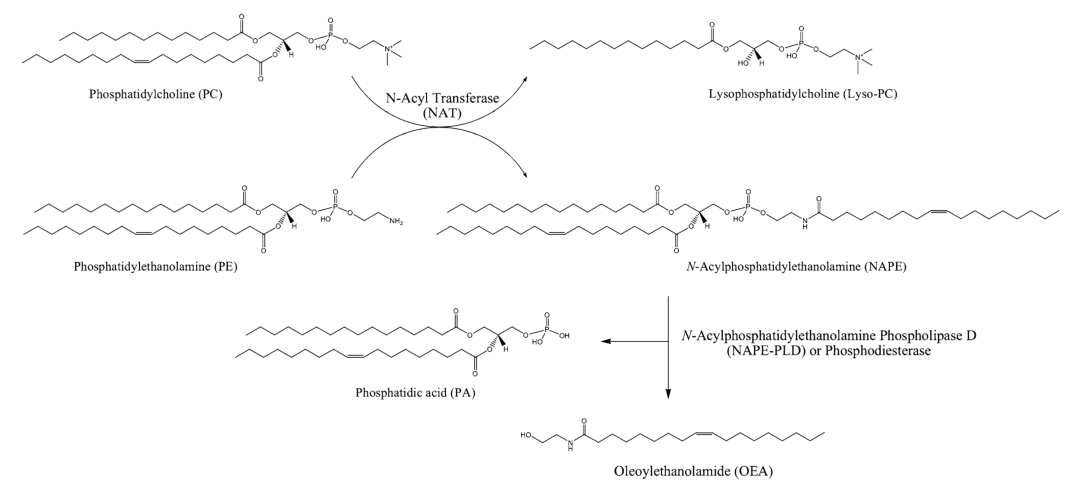
OEA biosynthesis pathway
Product Development
As a lipid molecule with a wide range of biological functions, OEA has great potential in the development of drugs for diseases such as gluttony obesity and enteritis, and has been used in the development of weight loss products.
A dietary supplement product containing OEA with weight loss function has been launched in the US market. NUTRIFORWARD first launched a weight loss capsule called RiduZone, each containing 90% OEA, and added other ingredients such as rice bran and carboxymethyl cellulose. Each bottle contains 60 capsules and is priced at US$80.
In Europe and the United States, OEA can be used as a dietary supplement. The US FDA approved OEA as a new dietary ingredient (NDI) in 2015. However, in China, because OEA has not yet been recognized as a new resource food, it cannot be sold as a food on the market.





